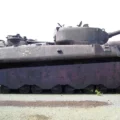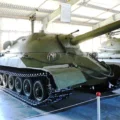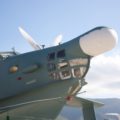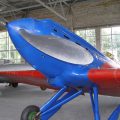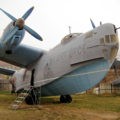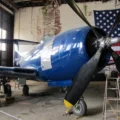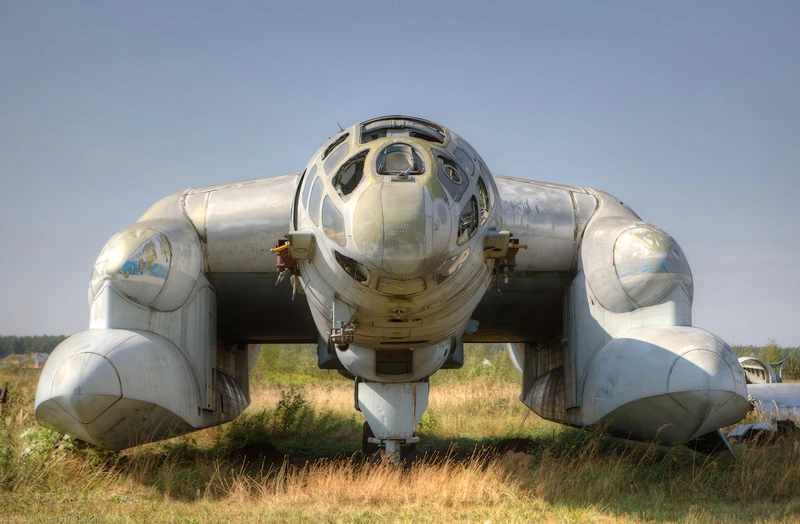
Bartini Beriev VVA-14 | |
|---|---|
| Maa | Neuvostoliiton |
| Tyyppi | Amfibinen ASW-lentokone |
| Ensimmäinen lento | 4. syyskuuta 1972 |
| Rakennettu | 2 |
Nniiden Bartini Beriev VVA-14 Vertikaľno-Vzletayushchaya Amfibiya (pystysuora nousuammuntalentokone) oli Neuvostoliitossa 1970-luvun alussa kehitetty siivekäs lentokone. Suunniteltu nostamaan vedestä ja lentämään suurella nopeudella pitkiä matkoja, se oli tehdä todellisia lentoja korkealla, mutta myös pystyä lentämään tehokkaasti aivan merenpinnan yläpuolella aerodynaamisen maavaikutuksen avulla. VVA-14:n on suunnitellut italialaissyntyinen suunnittelija Robert Bartini vastauksena yhdysvaltain laivaston Polaris-ohjussukellusveneiden tuhoamiseen. Viimeinen lentokone otettiin eläkkeelle vuonna 1987.
| Bartini Beriev VVA-14 Kävele | |
|---|---|
| Valokuvaaja | Igor Kolokolov |
| Lokalisointi | Ei tietää |
| Valokuvat | 130 |
Katso myös:
Bartini Beriev VVA-14 oli ainutlaatuinen lentokone, jonka Neuvostoliitto kehitti 1970-luvun alussa. Sen suunnitteli Robert Bartini, unkarilaissyntyinen insinööri, joka työskenteli Berievin suunnittelutoimistossa. VVA-14: n oli tarkoitus olla amfibinen lentokone, joka voisi nousta ja laskeutua veteen, lentää suurella nopeudella pitkiä matkoja ja käyttää aerodynaamista maavaikutusta lentääkseen tehokkaasti juuri merenpinnan yläpuolella. VVA-14: n päätarkoituksena oli torjua Yhdysvaltain laivaston Polaris-ohjussukellusveneiden uhkaa, joka voisi käynnistää ydinohjuksia vedenalaisesta.
VVA-14: llä oli futuristinen ulkonäkö, jossa oli suuri keskisiipiosa, jossa oli kaksi turboahtomoottoria ja neljä pienempää siipeä, jotka voitiin kallistaa pystysuoraan lentoonlähtöä ja laskeutumista varten. Lentokoneen siivenkärjissä oli myös puhallettavat ponttonit, joita voitiin käyttää vesioperaatioihin. VVA-14: llä oli tarkoitus olla hienostunut sukellusveneiden vastainen sodankäyntijärjestelmä, mukaan lukien tietokoneistettu Burevestnik-järjestelmä, Bor-1-magneettinen poikkeamailmaisin sekä erilaiset anturit ja aseet.
VVA-14: n kehitys jaettiin kolmeen vaiheeseen: VVA-14M1 oli aerodynamiikan ja tekniikan perustestialusta; VVA-14M2 oli edistyksellinen versio, jossa oli lisämoottoreita pystysuoraan lentoonlähtöön ja laskeutumiseen (VTOL); ja VVA-14M3 oli lopullinen operatiivinen versio, jossa oli täysi aseistus ja varusteet. Kuitenkin vain kaksi prototyyppiä rakennettiin ja testattiin: yksi VVA-14M1 ja yksi modifioitu VVA-14M1P: ksi. Projektissa oli monia teknisiä vaikeuksia, erityisesti ilmatäytteisten ponttonien ja VTOL-moottoreiden kanssa, joita niiden toimittaja ei koskaan toimittanut. Bartinin kuoleman jälkeen vuonna 1974 projekti menetti vauhtiaan ja päättyi lopulta vuonna 1987.
Ainoa elossa oleva VVA-14 on nyt esillä Moskovan ilmavoimien keskusmuseossa, jossa se on edelleen puretussa tilassa. VVA-14 oli yksi aikansa kunnianhimoisimmista ja innovatiivisimmista lentokoneprojekteista, mutta se ei koskaan saavuttanut täyttä potentiaaliaan tai tullut käyttöön.
Katselukertoja : 3401




